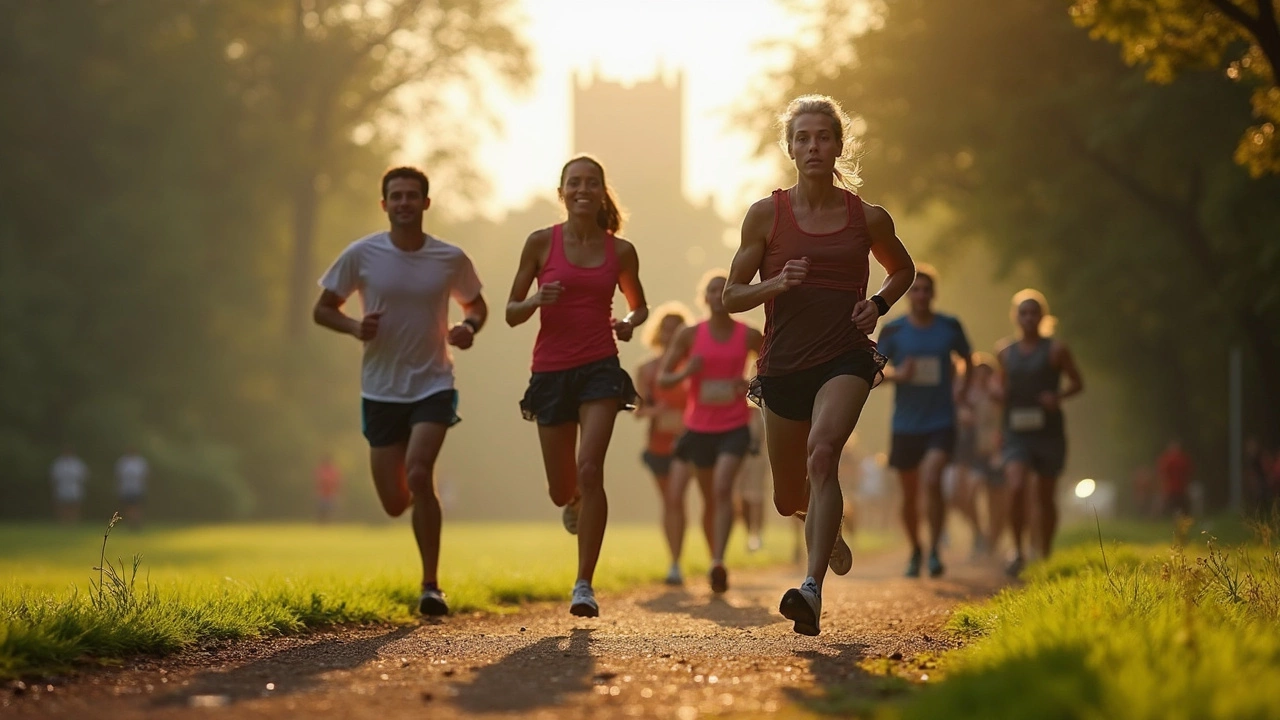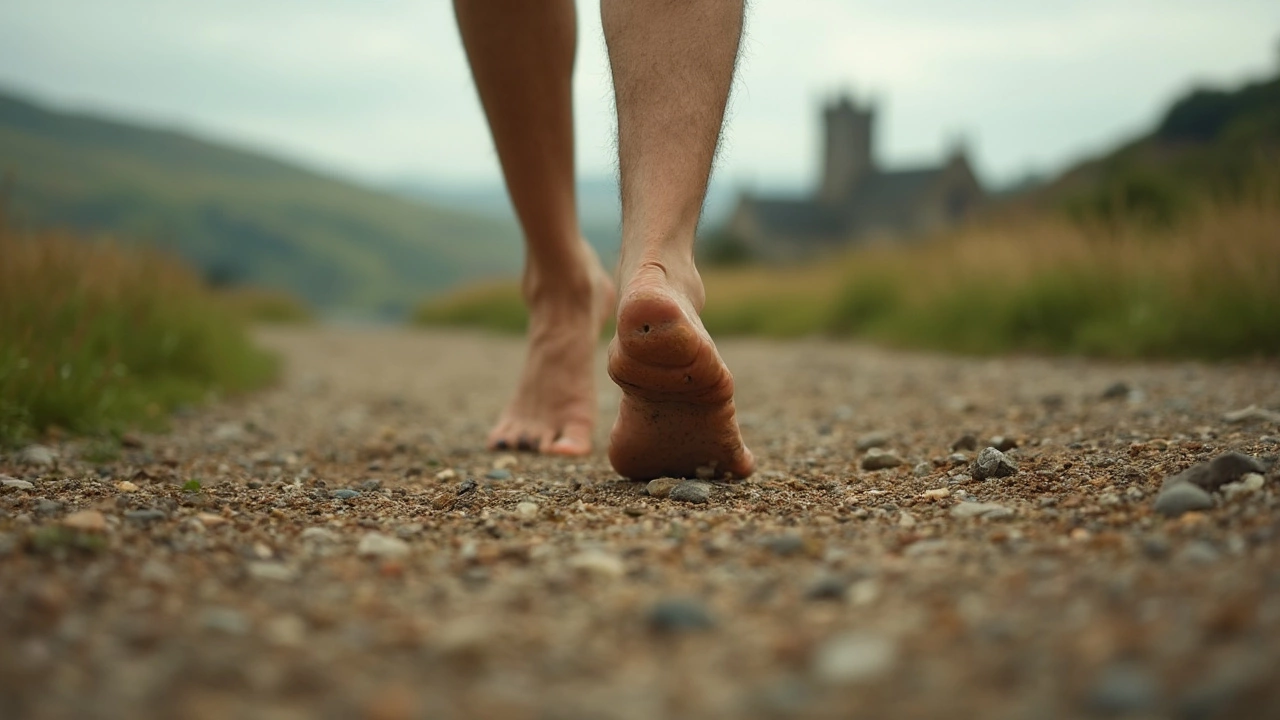Is Barefoot Running Good? What You Really Need to Know

Barefoot running sounds wild, right? Picture someone breezing down the street or a trail, toes out, shoes nowhere in sight. This isn’t just some attention-grabbing trend. It’s actually inspired by the idea that we’re “born to run,” and that shoes—especially the cushy kind—might be messing with the way we move.
Ever wonder why so many people talk about barefoot running as the remedy for aches, pains, or slow running times? Some believe ditching your shoes could fix knee pain, ankle soreness, or help you run faster with a “natural” stride. Pop culture gave it a push too. After the book “Born to Run” hit shelves, barefoot groups exploded almost overnight. Suddenly, folks all over were questioning if their trusty runners were friend or foe.
If you’ve ever walked across grass or sand barefoot, you might’ve noticed you walk differently. Barefoot running changes your stride, your landing, and even which muscles do the heavy lifting. But is it actually safer or smarter?
- Why Did Barefoot Running Get Popular?
- What Changes When You Lose the Shoes?
- Risks and Real Benefits: Science vs Hype
- Tips If You Want to Try Barefoot Running
Why Did Barefoot Running Get Popular?
Barefoot running didn't just burst onto the scene out of nowhere. It really took off after the release of the book "Born to Run" by Christopher McDougall in 2009. This book followed the Tarahumara people of Mexico, famous for running long distances over rocky trails with little or no footwear. Suddenly, everyone was wondering if shoes were actually making running harder or causing injuries.
People started to question standard running shoes, especially after some small studies showed that cushioned shoes didn’t cut down on injury rates as much as everyone thought. Brands jumped in and started selling “minimalist” shoes that looked and felt nothing like bulky traditional trainers. Even big companies like Nike and Vibram (the folks behind those glove-like FiveFingers) rode the wave of this new trend.
What pushed the movement even more were stories of elite runners who raced barefoot. Maybe you’ve heard of Abebe Bikila, who won Olympic gold in 1960 without any shoes. His win seemed to show that maybe the circle of heavy, high-tech trainer hype was just... hype.
When it comes to search interest, Google Trends shows barefoot running hit its peak between 2010 and 2012, after which things calmed down, but it’s never really gone away. Loads of forums and internet groups are full of runners comparing the pros and cons, sharing tips, or debating injuries. Here's some quick info on why it became such a big deal:
- Books and documentaries celebrated shoe-free running.
- Scientific studies challenged old-school running shoe designs.
- Minimalist shoe companies exploded, giving runners more options.
- Runners frustrated by injuries wanted to experiment.
- Stories of long-distance tribes and Olympic champions inspired change.
Some actual research shows around 15-20% of runners have at least tried barefoot or minimalist running. Most of them wanted to improve comfort, reduce injuries, or just see if it was more fun.
| Year | Barefoot Running Searches (relative scale) |
|---|---|
| 2008 | 16 |
| 2010 | 97 |
| 2012 | 89 |
| 2014 | 55 |
| 2023 | 32 |
Today, the buzz about barefoot running is quieter, but plenty of runners swear by it, or at least love debating about it. The appeal? It’s all about running like our ancestors—simple, free, and maybe less injury-prone. But just because it’s popular doesn’t mean it’s for everyone. So, why do some folks think it could actually help your running? Let’s keep going.
What Changes When You Lose the Shoes?
Take off your shoes and everything about your run changes: stride, landing, and what muscles work hardest. Right away, you’ll notice your feet make a flatter, softer contact with the ground. Instead of slamming down heel-first—like you might in thick sneakers—most people shift to a forefoot or midfoot strike. This reduces the hard impact that shoots up into your knees and hips.
Going barefoot seriously wakes up your feet. Your foot muscles, tendons, and nerves that usually sleep inside shoes are suddenly doing a lot more work. Shoes with big cushions absorb shock for you, but bare feet don’t get that help—so the tiny muscles in your feet act as natural shock absorbers.
People who switch to barefoot running often report improved balance and better awareness of each step. Science backs this up. A 2014 study found that folks running without shoes had stronger foot muscles after several months. Their feet got wider and more flexible, too.
But there’s no magic fix. Barefoot running puts fresh stress on your Achilles tendons and calves. If you’re used to sturdy, structured shoes, your heels will feel a stretch most runners haven’t felt in years. Some runners complain about tightness or even pain as their legs get used to the new motion.
- Your stride shortens, so you take quicker, smaller steps.
- Your toes spread out naturally—no more squishing together.
- You’ll feel almost every pebble, stick, or bump, which can make you more careful and mindful.
- No arch support means your arches must pull their own weight—literally.
The shift to barefoot running can lead to more “ground feel.” That’s a fancy way to say you’ll notice every texture and slope. This change might make your form sharper but also means you need to toughen up your soles and pay close attention to surfaces—no more daydreaming through your run.

Risks and Real Benefits: Science vs Hype
So, what’s the truth behind all the hype about barefoot running? Is it actually better for your body, or are you just risking a bruised heel and an awkward look?
Let’s start with the possible benefits—and yes, studies have spotted a few. Research from Harvard showed that barefoot runners usually switch to a forefoot or midfoot strike, rather than landing on their heels. This change can cut down the peak impact force on your joints. Some people say this helps their knees, hips, and lower back feel better over time.
Running shoeless also forces muscles in your feet and calves to work harder. If you always run in thick shoes, a bunch of tiny muscles stay lazy. Take off your shoes, and suddenly they’re up for a real workout. A 2019 study from the Journal of Sport and Health Science found that folks who went barefoot (or wore minimalist shoes) actually improved foot muscle strength after a few months. They also reported fewer issues with plantar fasciitis and shin splints.
| Potential Benefit | What Studies Suggest |
|---|---|
| Lower joint impact | Forefoot landing reduces force on knees and hips |
| Stronger foot muscles | Noticeable after 8-12 weeks of barefoot or minimalist running |
| Fewer overuse injuries | Some runners see drop in plantar fasciitis and shin splints |
But don’t toss your running shoes just yet. Going barefoot comes with risks, and these aren’t just rare horror stories. About half of people switching to barefoot running report getting some kind of injury in the first six months. Stress fractures, especially in the bones of the foot, are probably the most common and show up when people go too far, too fast without building strength first. Cuts, scrapes, and bruises are real, too—sidewalks and trails aren’t exactly soft or clean.
Some research even showed that new barefoot runners can develop Achilles discomfort or calf pain as their bodies try to adjust. And if you’ve ever had trouble with your feet—like flat arches or chronic injuries—barefoot running could actually make things worse.
Here’s the key thing: studies agree on one major rule. If you want to try barefoot running, you have to do it slowly. A sudden change almost guarantees pain or injury. The hype is real, and the benefits do exist, but safety really depends on patience and paying attention to your body.
- Don’t drop traditional running shoes overnight—ease in gradually.
- Start with short barefoot walks to build up foot muscles.
- Watch your running surface—avoid sharp gravel and hot pavement.
- If pain sticks around longer than a few days, go back to shoes and talk to a doctor.
Barefoot running isn’t magic. It can be awesome for some people, risky for others, and is never a one-size-fits-all fix. Listen to your body, go slow, and don’t let the hype make you skip basic common sense.
Tips If You Want to Try Barefoot Running
Thinking about testing out barefoot running? Don’t just rip off your shoes and go for a sprint. Easing into it the right way helps your feet, legs, and tendons get used to the new habits. You can avoid those classic aches—like sore calves or even a bruised heel—if you pay attention to the basics.
Here are some steps to keep it safe and realistic:
- Start slow and short: The first run should be a walk, honestly. Try five or ten minutes barefoot on safe ground (think grass or a rubber track).
- Ease up on distance: Up your barefoot running time by only a couple of minutes each week. Your feet will thank you.
- Pick the right place: Stay off concrete at first. Soft grass, packed dirt, or synthetic tracks are good choices while your feet toughen up.
- Listen to your body: Any stabbing pain isn’t normal. Mild soreness, especially in your calves and arches, is common at first. Sharp pain means back off.
- Watch your form: Barefoot running usually shifts you to a forefoot or midfoot strike. Try to keep your steps light and quick—experts call this “increasing your cadence.”
- Try minimalist shoes if you’re hesitant: These mimic barefoot running while still giving you a thin barrier between your skin and the ground.
A lot of people hurt themselves by doing too much, too soon. There's actual data on this: in a 2013 Harvard study, runners who switched to barefoot-style too fast had a higher chance of dealing with stress fractures—some even had injuries in the first couple months!
| Transition Time | Reported Injury Rate (%) |
|---|---|
| Less than 4 weeks | 29 |
| 4-8 weeks | 11 |
| Over 8 weeks | 6 |
If you live where the ground is rough or packed with hidden stuff—broken glass, sharp gravel—remember that barefoot isn’t for everyone! There’s no shame in stepping back. Callused feet don’t mean healthy feet if you’re always getting hurt.
And one last thing: if you have diabetes, neuropathy, or foot issues, talk to a health pro first. Your foot health comes first, no matter what trend you want to try.
